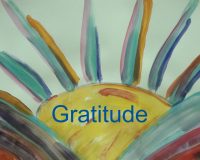
Forgiveness and Walking the Path of Light – Part 5B

Forgiveness is an important component of walking in the light as it enables us to begin the process of healing when we have been hurt by others.
This blog addresses two questions:
- Why is it so hard to forgive even when we want to?
- How do we forgive serious wrongs against us?
Blocks to forgiveness
There are many reasons why we find it hard to forgive. Here are a few possibilities:
- We feel that the damage done to us is just too severe.
- We feel that if we forgive the wrongdoer we are actually condoning their misdeeds; saying that it doesn’t matter all that much and that we can cope.
- Holding a grudge gives us a feeling of power and control and allows us to feel less of a victim.
- A therapist has told us not to forgive.
- We feel that it just isn’t safe to forgive; that forgiveness will allow the person to hurt us again.
- What about justice? If we believe the wrongdoer does not deserve forgiveness, perhaps withholding forgiveness is the only means we have of punishing them for their misdeeds.
- Why should we be the ones to forgive if we can detect no visible signs of remorse? Surely the apology must come first before forgiveness is possible.
The Desire for Justice
It is a common belief that some sort of penalty should be exacted from the wrongdoer to make up for what they have done. Perhaps we never speak to them again or we get them back. Whatever it is, exacting a penalty is known as retributive justice and it is how our correctional system works. Without such a penalty, we may feel entitled to withhold forgiveness. The drawback to this approach is that we continue to live in a wounded state with no hope of real healing.
God’s Vengeance Not Ours
God has another way of helping us to deal with the issues of retribution and justice. In Romans 12:19 and in Hebrew 10:30, we read, ‘ “Vengeance is mine. I will repay,” says the Lord.’ This means that we are to leave the other person in the hands of God to deal with as God wishes. Whatever lessons that person needs to learn, they will learn them from a fair and loving God, not from us. God does not want us to exact revenge. By releasing the wrongdoer to God, we are freed from the burden of hate.
But how do we do this?
How to Forgive
First, we need to fully acknowledge the wrong that has been done to us. Going into denial or numbing the pain simply won’t do. In fact, these defences can cause us to return to a relationship that is unhealthy or even dangerous. The truth is, our boundaries have been breached by the wrongdoer. The only way to mend those internal boundaries is to be honest about exactly what has happened and this involves fully encountering the pain that was caused. If the damage is serious then the support of a counsellor, pastor or friend may be necessary. The pain needn’t last forever. By encountering it with God beside us, the wounds can be healed and our boundaries, mended. In this way, we become stronger, more awake, and less prone to future harm.
Two Methods of Forgiveness
There are two methods I have found useful for myself and others. Both involve using the imagination.
Method 1
Find a comfortable position where you can sit and relax.
Close your eyes. Relax each part of your body and breathe quietly and naturally.
When you are ready, imagine a wood of tall trees and shrubs. You see a path through the trees and you begin to walk down that path, noticing the trees and shrubs and other plants as you walk along.
After a while you come to a clearing where you see a small hut. The person who has hurt you is standing in front of the hut. You know that inside the hut Jesus is sitting at a small table.
You approach the person, take them by the hand, and lead them into the hut. (If you can’t bear to touch them then just indicate that they are to follow you. As you enter the hut, Jesus smiles at you and stretches out his hand. You know you are loved. You place the hand of the wrongdoer in Jesus’ hand, and as he invites them to sit down with him, you turn and leave.
You walk back down the path and out of the woods.
Then slowly open your eyes, and when you are ready, come back to the present-day world.
Repeat this procedure as often as necessary. Jesus exhorts us to forgive 70 X 7 so you may need to do this more than once (Matt 18:21-22). Eventually the hurt will begin to heal as you release the burden of anger and rage that you have been carrying on your back, maybe for a long time.
This method has worked for me and a number of other people that I have passed it onto. I learned it in Theological College but do not recall its source.
One woman was in distress because she was being persecuted by some former colleagues who were threatening her with legal action. She tried the above exercise for a month and found that the heavy burden of pain, hate and anger began to lift. Shortly thereafter, she felt free, and her former colleagues called off their legal action.
Method 2
Find a comfortable position where you can sit and relax.
Close your eyes. Relax each part of your body and breathe quietly and naturally
When you are ready, imagine a big bundle lying beside you. In the bundle are all the incidents of pain and hurt that you are experiencing along with your anger and hatred or whatever negative feelings you have toward the other person.
Now imagine Jesus standing in front of you.
Perhaps he is smiling at you and you know that you are loved.
Pick up the bundle beside you and give it to Jesus.
Then when you are ready quietly open your eyes and return to the everyday world.
This method can be used for anxiety and worry as well as for forgiveness.
So, there you have it. These methods can also be used for the continuing regrets and guilt that you experience for your own wrongdoing – yet another way of enabling us to walk the path of light.
For further reading, click here for my blog post on the theology of forgiveness
or here for Forgiveness: A One-sided Affair? Walking the Path of Light – Part A.




